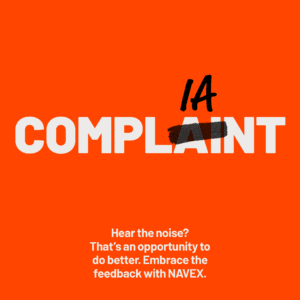Do you remember your childhood fears of a monster in your closet? You were afraid because the closet was a dark, cavernous space and you did not know what might lurk within it. The monster in your contracts closet is the risk of compliance problems when you are unaware and not in control of what is there. For many organizations, their contracts situation is, well, a nightmare.
How many active contracts does your company have? Does anyone even know? Many organizations have an idea on the contracts related to the sale of their goods and services or those that go through the procurement process, but what about the numerous other “one-off” contracts that an organization may have? If you know how many there are, do you have a handle on the obligations in those contracts that may be impacted by legislation and regulations such as Safe Harbor, Sarbanes-Oxley, the FCPA or the UK Anti-Bribery Act, or on the record retention requirements related to the contracts? Are you confident that all the new contracts your organization enters into contain the appropriate statutory or regulatory language, and do you have a way of tracking that? Many organizations’ systems and processes simply do not provide the necessary visibility into contractual obligations.
In these days of increased regulatory scrutiny, expansive litigation and regulatory investigations, it is imperative to make sure that your organization’s contracts are in compliance and are being managed effectively. There are two challenges to this effort: locating and evaluating legacy contracts and having a plan for keeping them organized and standardized going forward. Many companies have legacy contracts that may pre-date existing regulations or may have simply slipped through the cracks, and many are not adequately managing their new contracts to ensure they include appropriate clauses and are administered accordingly. This article will discuss the proactive steps an organization can take to get its contracts in order – looking back and going forward: in other words, how to clean out and organize the contracts closet.
Looking Back – Legacy Contracts
The first step in taking control of your contracts is to address your legacy contracts. You will need to identify, collect and usably store legacy agreements and gain insight into their content relating to compliance.
Identifying and collecting contracts can be difficult for some organizations. For many, not all contracts are housed centrally. To continue the analogy, their closet contents may be wedged in a back corner, may have been removed and not rehung or, for some, may even be under the bed. In other words, contracts may be in a variety of departments or locations, even in individuals’ files. They may be stored on hard drives, network drives, software solutions, file shares, etc., and may be stored as text, Word documents, PDFs, images or other formats. There may be multiple versions of a contract in existence and difficulty in identifying the “official” record.
Identification and collection of contracts can be done manually, through painstaking inventories of files and interviews with business units and individuals. This inventory can be done in conjunction with the records and information management (RIM) department. Fortunately, there are also technology solutions that can assist with and accelerate the process of identification and collection.
Once you have confirmed that all active contracts have been identified and collected, you can review them for insight into the relevant obligations as well as the presence and conformity or absence of language required for compliance. At the same time, you can also review for pertinent information such as compliance obligations, expiration or renewal dates, payment terms, volume discounts, etc. In other words, sorting for size and style before storing them in your contracts closet. Depending on the volume of contracts at issue, it can be cost-effective and more efficient to outsource this review, although not all document review providers have the technology-enabled processes and infrastructure exclusively focused on contracts that will allow them to achieve the best outcome. From a compliance perspective, this review will provide knowledge of the overarching standards contained in your contracts as well as any deviations from those standards.
Looking Forward – Contract Management and Contract Creation
To avoid the necessity of repeating this process on a regular basis, you will want a searchable contract repository not only for the legacy contracts, but also for new agreements going forward, and you will want to ensure that the new contracts that are generated meet the organization’s applicable compliance standards.
Contract management technology can provide the ultimate in closet organization for your contracts. Today’s systems and technologies not only organize and store contracts in a searchable way, they also manage the complete life cycle of contract processes – creating, negotiating, drafting, executing and administering the obligations within the contracts. Contract management systems can be integrated into enterprise-wide systems such as email (offering email notices of various triggering events, for example), with document management and records management systems, customer relationship software and, importantly for these purposes, with governance, risk management and compliance (GRC) systems.
In order to prevent having to go through the entire closet-cleaning exercise repeatedly, it is important to create new contracts that comply with the appropriate conventions and to incorporate them into the contracts management program. Drafting can be done through the use of templates, which can be part of the contract management system, or through the use of innovative technology solutions that can create dynamic, custom-built contracts that adhere to the organization’s standards, even for complex agreements.
Conclusion
A holistic contracts management program that includes both legacy and new contracts will banish the compliance monster from your contracts closet. Businesses should expect to have complete visibility of, and control over, the commitments they make – not simply hope that this is the case. A comprehensive program will not only provide peace of mind from a compliance perspective, but also add value to the business as a whole. The ability to effectively manage contracts’ obligations and commitments will allow an organization to extract maximum value from its contracted relationships by avoiding unnecessary costs, maximizing revenue, reducing risk and ensuring effective delivery of contractual obligations.
_____________________________
About the Authors
 Jeff Catanzaro’s expertise is in providing legal process outsourcing solutions to corporations and law firms relating to litigation, corporate transactions, contract management, and due diligence. He also has business development, supply chain management and experience building LPO centers in Asia and India.
Jeff Catanzaro’s expertise is in providing legal process outsourcing solutions to corporations and law firms relating to litigation, corporate transactions, contract management, and due diligence. He also has business development, supply chain management and experience building LPO centers in Asia and India.











